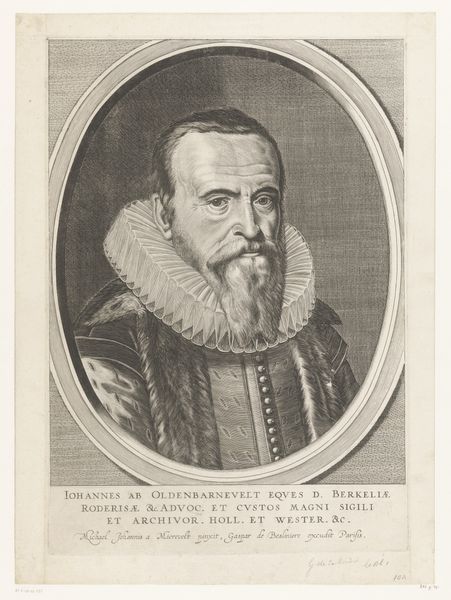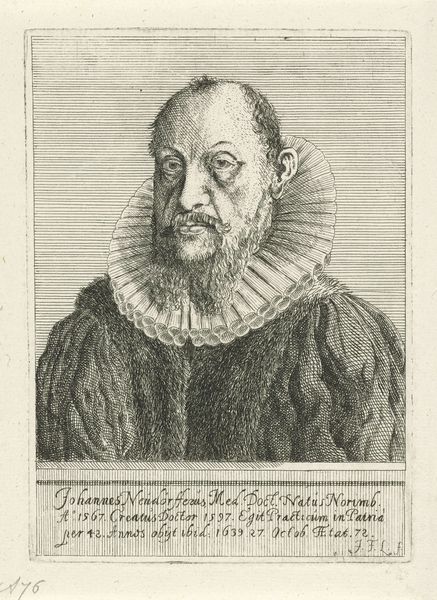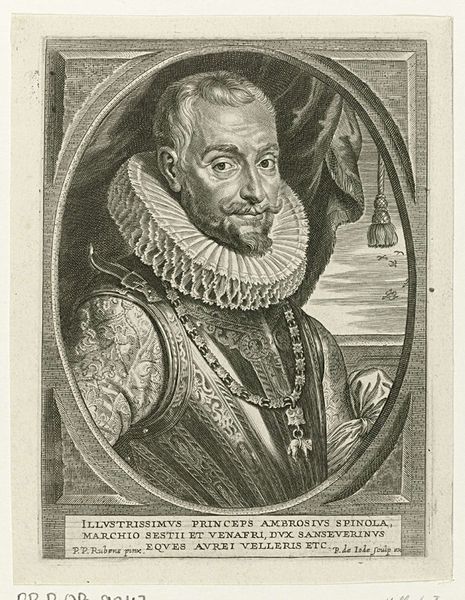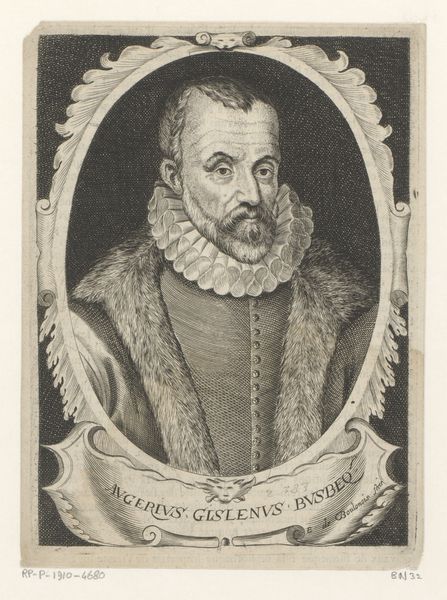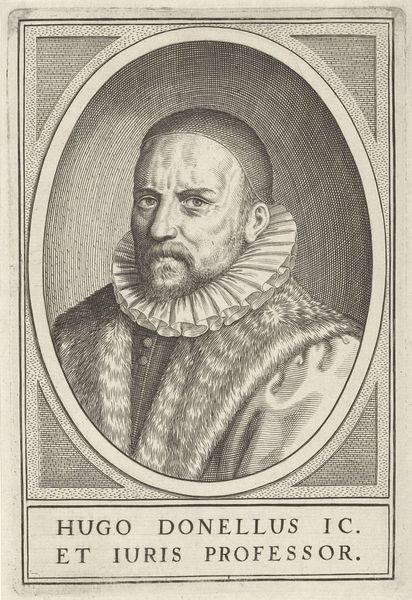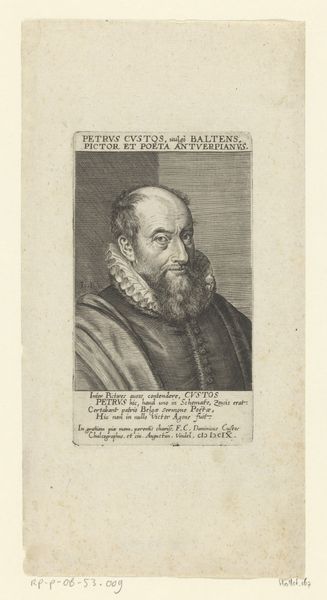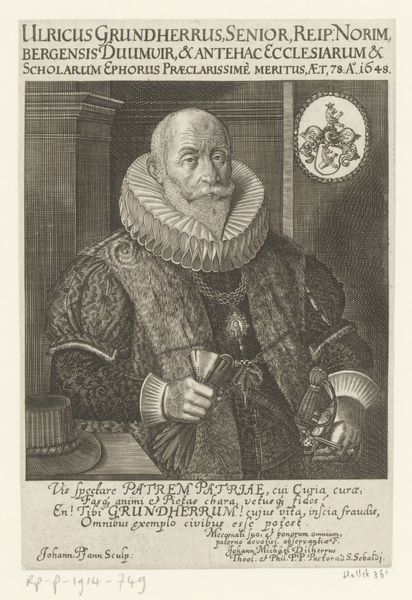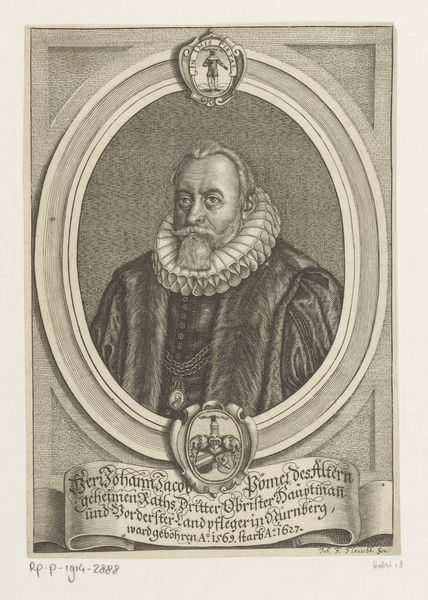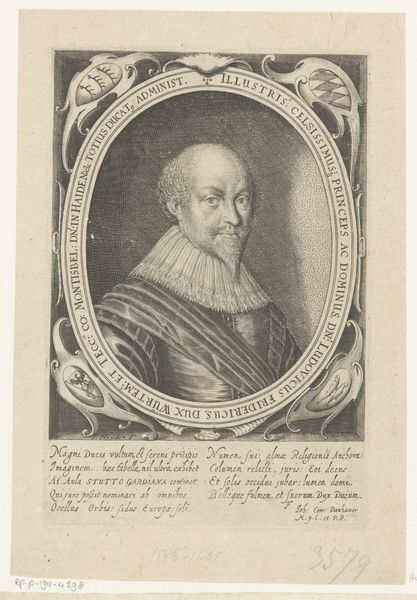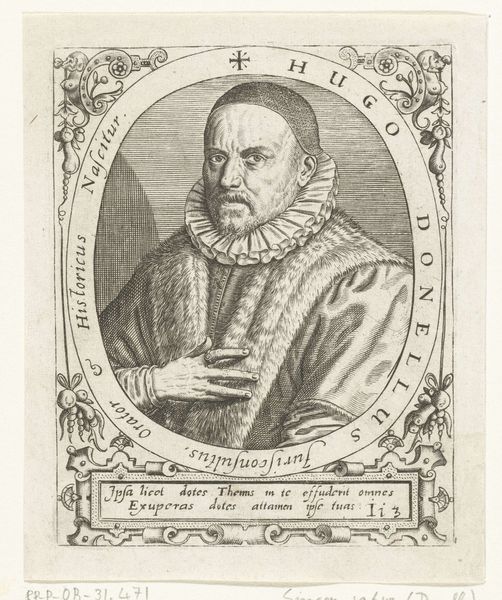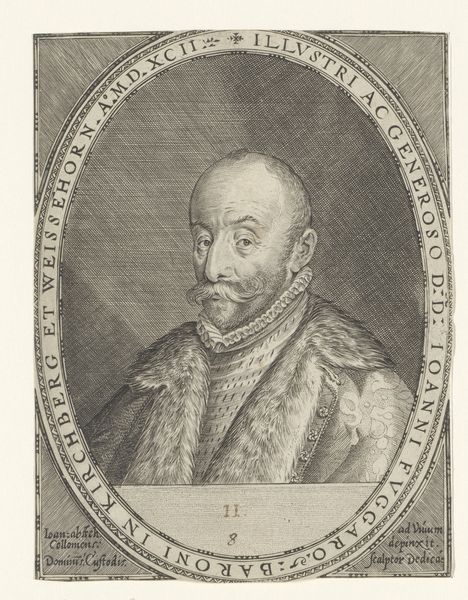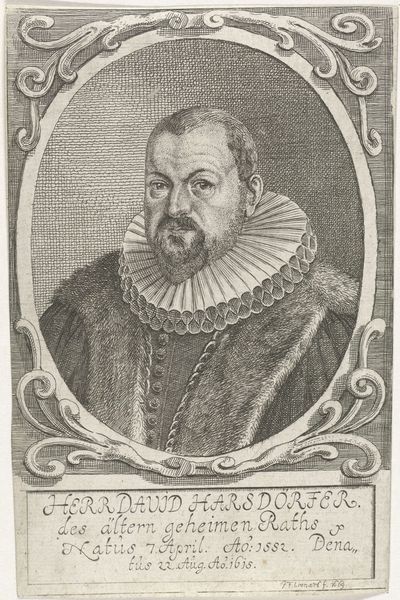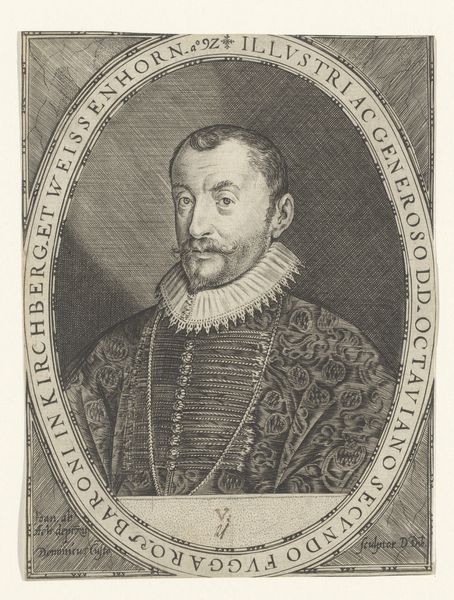
print, engraving
#
portrait
#
aged paper
# print
#
old engraving style
#
portrait reference
#
limited contrast and shading
#
history-painting
#
northern-renaissance
#
engraving
Dimensions: height 197 mm, width 105 mm
Copyright: Rijks Museum: Open Domain
Curator: Looking at this rather dignified portrait, I'm struck by the figure's almost unsettling direct gaze. There's a weightiness to it. Editor: It's certainly an imposing image. What are we looking at? Curator: This is an engraving titled "Portret van Hermann Vultejus" by Jacob van der Heyden, made sometime between 1583 and 1634. Vultejus was, according to the inscription, a celebrated professor of law and someone seen as benefiting the Christian Republic. Editor: So, the context really frames our reading here. This isn't just a likeness; it's a carefully constructed image meant to convey status and authority, look at that elaborate ruff and fur-trimmed coat. How would you describe the print making process? Curator: Engraving, like etching, is an intaglio process, meaning the lines are cut into a metal plate – here, probably copper. The plate is then inked, and the surface wiped clean, leaving ink only in the engraved lines. Pressed against paper, it transfers the image. The precision suggests careful labour, fitting for representing a figure of importance. Editor: Right, and consider the intended audience – the market for prints like these was growing, fuelled by the spread of knowledge and the desire to own images of important figures, reflecting an interest in the production of status and celebrity itself. Also it features Latin script on it, emphasizing on humanism of its time. Curator: Exactly, it highlights his intellectual contributions and positions him within a lineage of respected figures. Editor: In that sense, it is fascinating, like other engravings of its type, as they reflect the increasing professionalisation and visibility of intellectuals within the broader social and political landscape. Curator: Yes, analyzing this through a contemporary lens allows us to see how it contributes to historical power dynamics and what happens when those dynamics change. It also prompts discussions around who gets represented and who shapes that representation. Editor: I appreciate how looking at this print underscores the material reality of knowledge production and how that shaped its time. Curator: And how reflecting on the values enshrined in images like these shapes our own contemporary understanding.
Comments
No comments
Be the first to comment and join the conversation on the ultimate creative platform.
